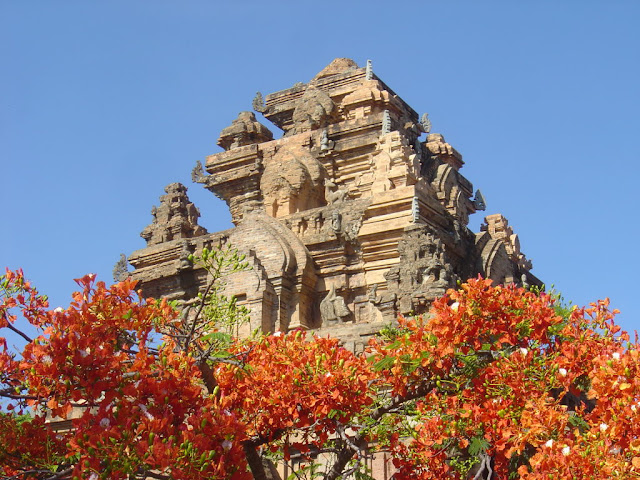In front of me are three slender young ladies, dancing as I've never seen before. They are visions from a lost kingdom. Their shimmering costumes are symbolic of a forgotten people, from an era that time forgot.
The golden attired nymphs move with a grace and allure that is timeless. It's dancing unlike any other in the world; this performance is reminiscent of an ancient dance of worship. The only place I've seen anything similar to this, is from the poses of statues of royal dancers or goddesses that grace Hindu temples.

Yet, I'm not in India. I'm in My Son in Vietnam. This land is better known as a home to Buddhists or communists. But not well known to the outside world, is that Vietnam was once home to a kingdom of Hindus and Muslims. Going back hundreds of years, central Vietnam was once known as the Champa Empire.
The Chams controlled what today is central Vietnam, plus parts of Cambodia and Laos. Over time, their lands were gradually lost to wars with the Vietnamese and the Khmers, until their kingdom disappeared altogether. They live now only in dispersed communities, just another one of Vietnam's many minority ethnic groups.
But I'm enthralled by the lovely ladies dancing for visitors like me today, their cultural dancing is truly a wonderful sight. As I watch the display, handsome male dancers join the graceful ladies for more movement. As their performance closes, I exit the theater to enter the adjacent ruins of My Son.
 |
| Cham tower on a hill overlooking the coastal town of Nha Trang |
The ruins here were once decaying, slowly weathering as the surrounding jungle approached. Indeed, there are still grasses growing out of gaps in the brick work on the rooftops. But this greenery only adds to their ancient, naturistic appeal.
 |
| Ancient Hindu ruins of My Son |
Sadly, many of the ancient structures here were destroyed or heavily damaged. As I walk about the complex, there are still many old bomb craters to be seen beneath the trees. My Son was recently named a UNESCO World Heritage site, so some of the hard hit structures are being restored, though work won't be completed for years.
Fortunately some of the structures here were left undamaged. So as I explore the complex, I can still feel a hint, see a glimmer, of the glory of the ancient Chams.
 |
| Cham dancers of My Son (with added mirror effect) |







































